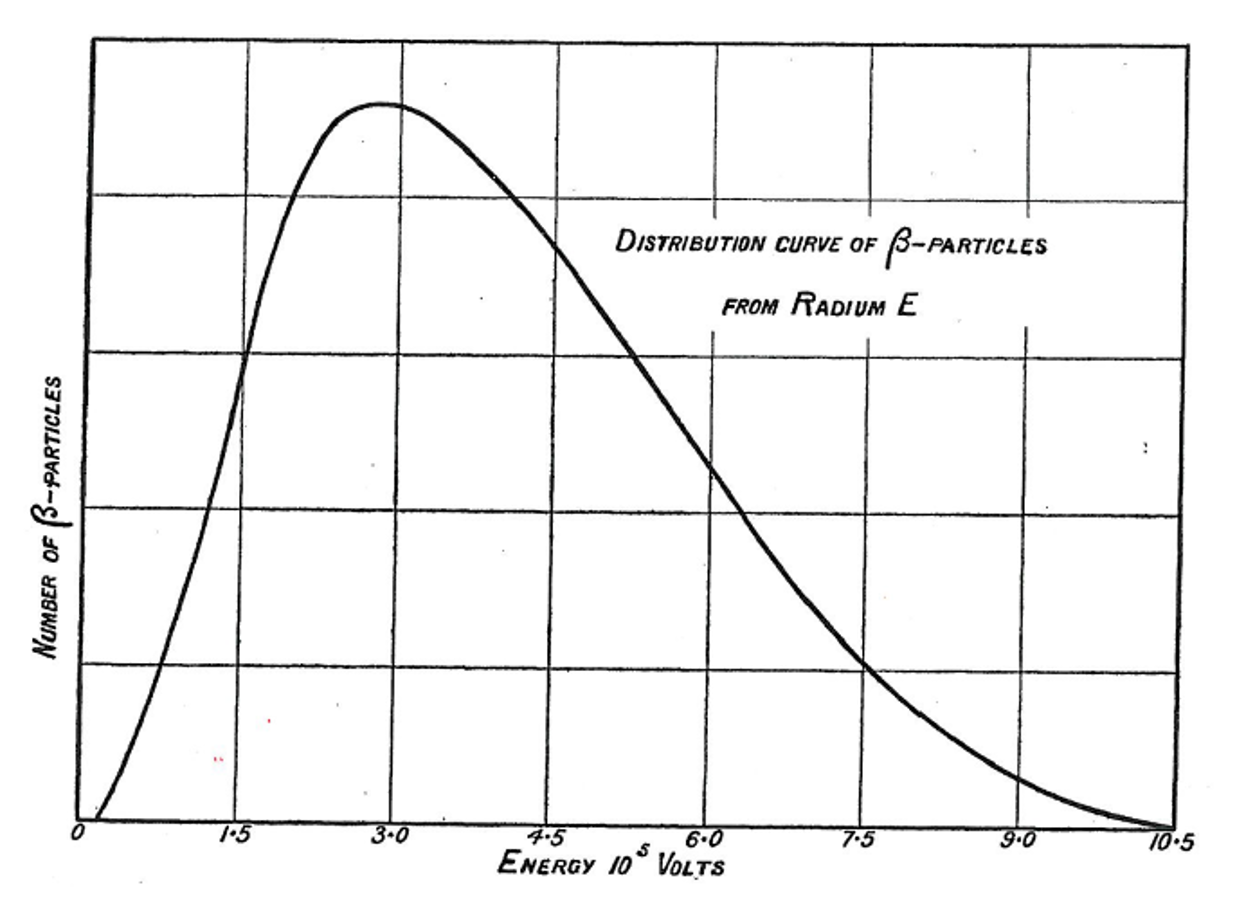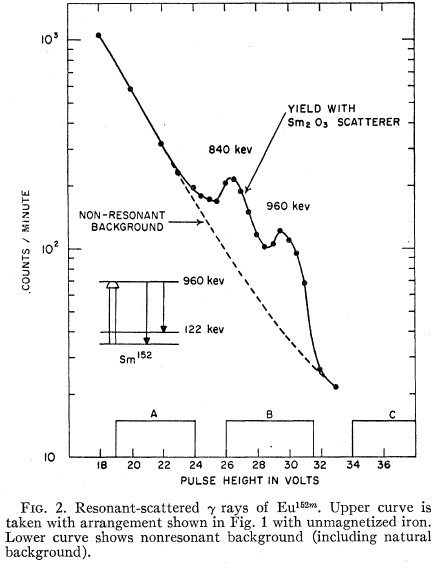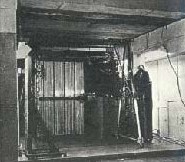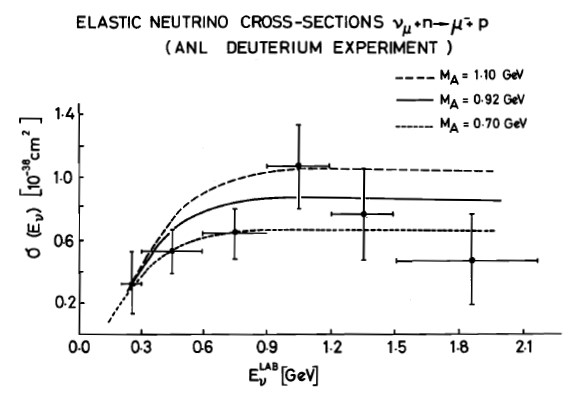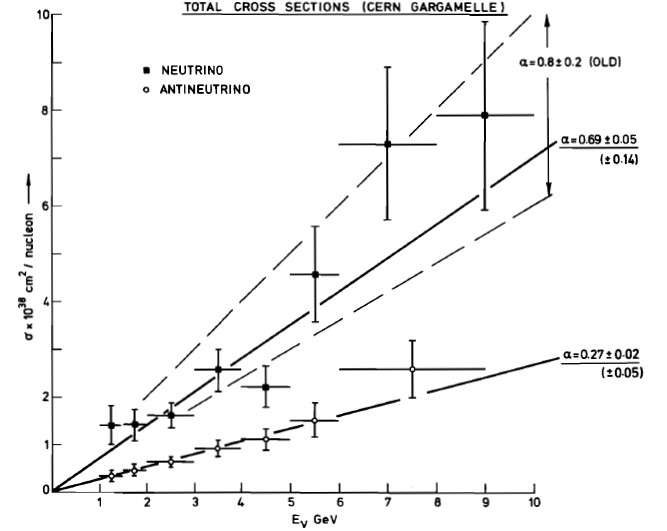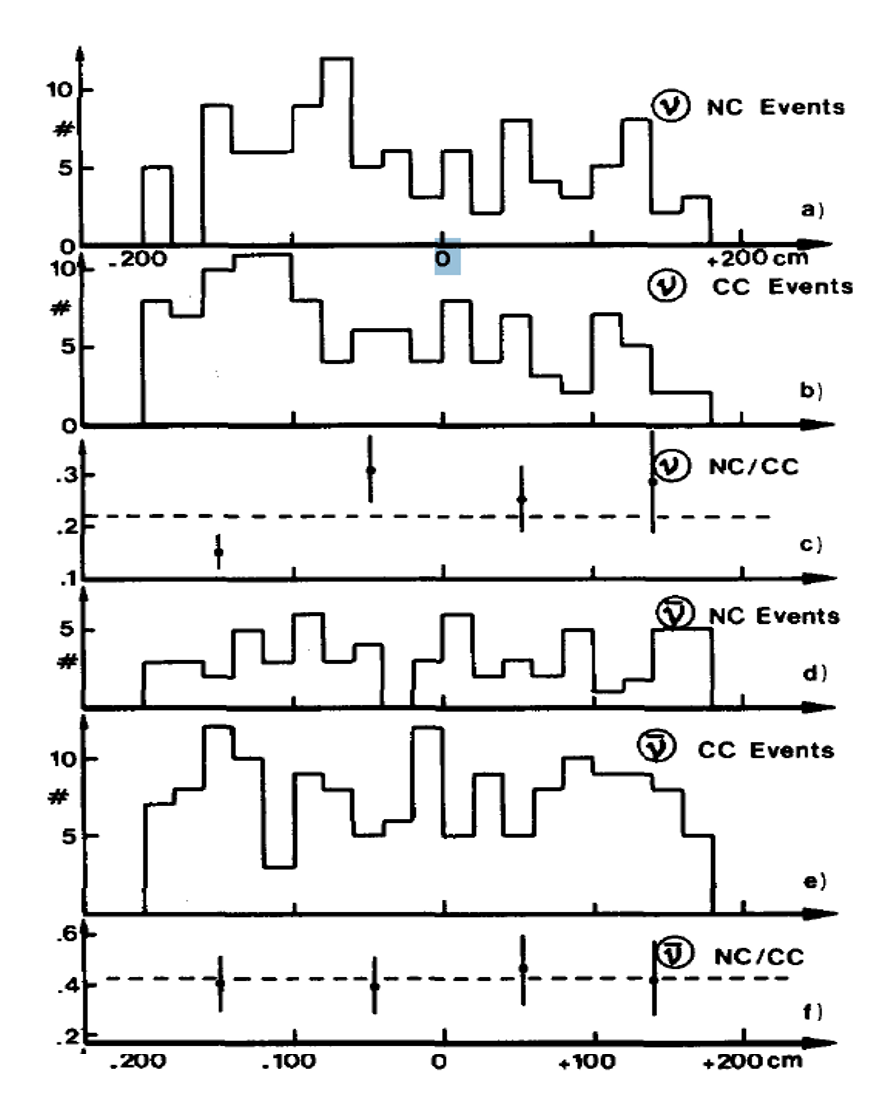We display below some plots or figures that marked the history of neutrino physics. First list contains breakthrough and primary results. Second list contains summary plots which are milestones in neutrino knowledge. Those lists are non-exhaustive and are the arbitrary choice of the authors. It can evolve according to your suggestions.
Breakthrough and first results plots
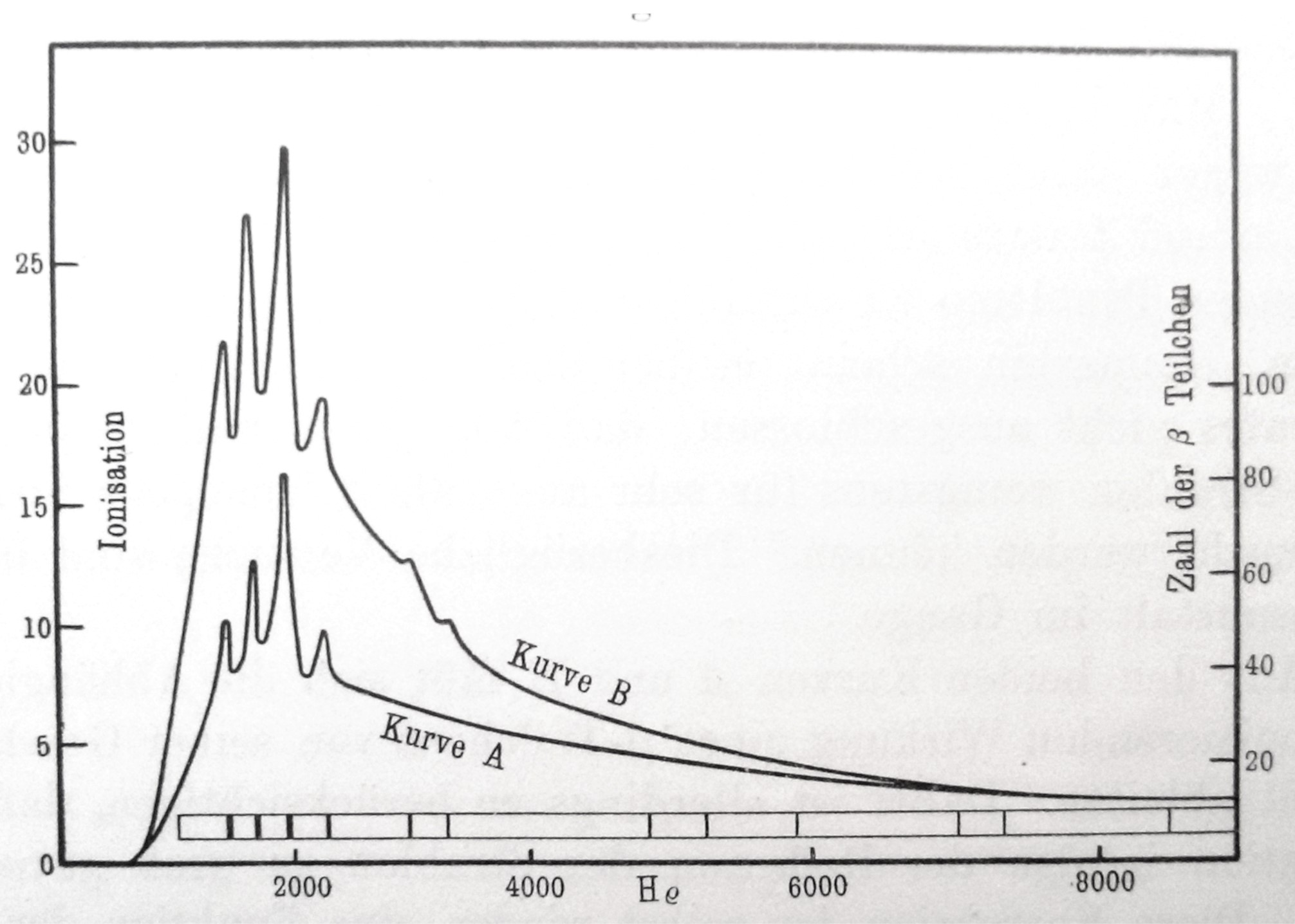
|
1914First result: Continuous beta spectrum measurement
|
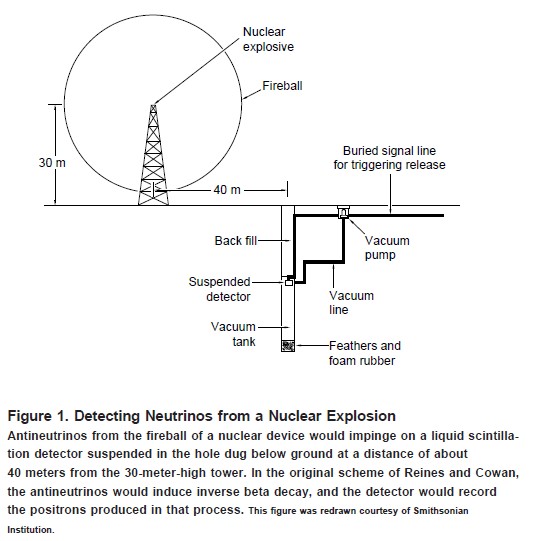 |
1951Scheme of the first neutrino project of F. Reines and C. Cowan
|
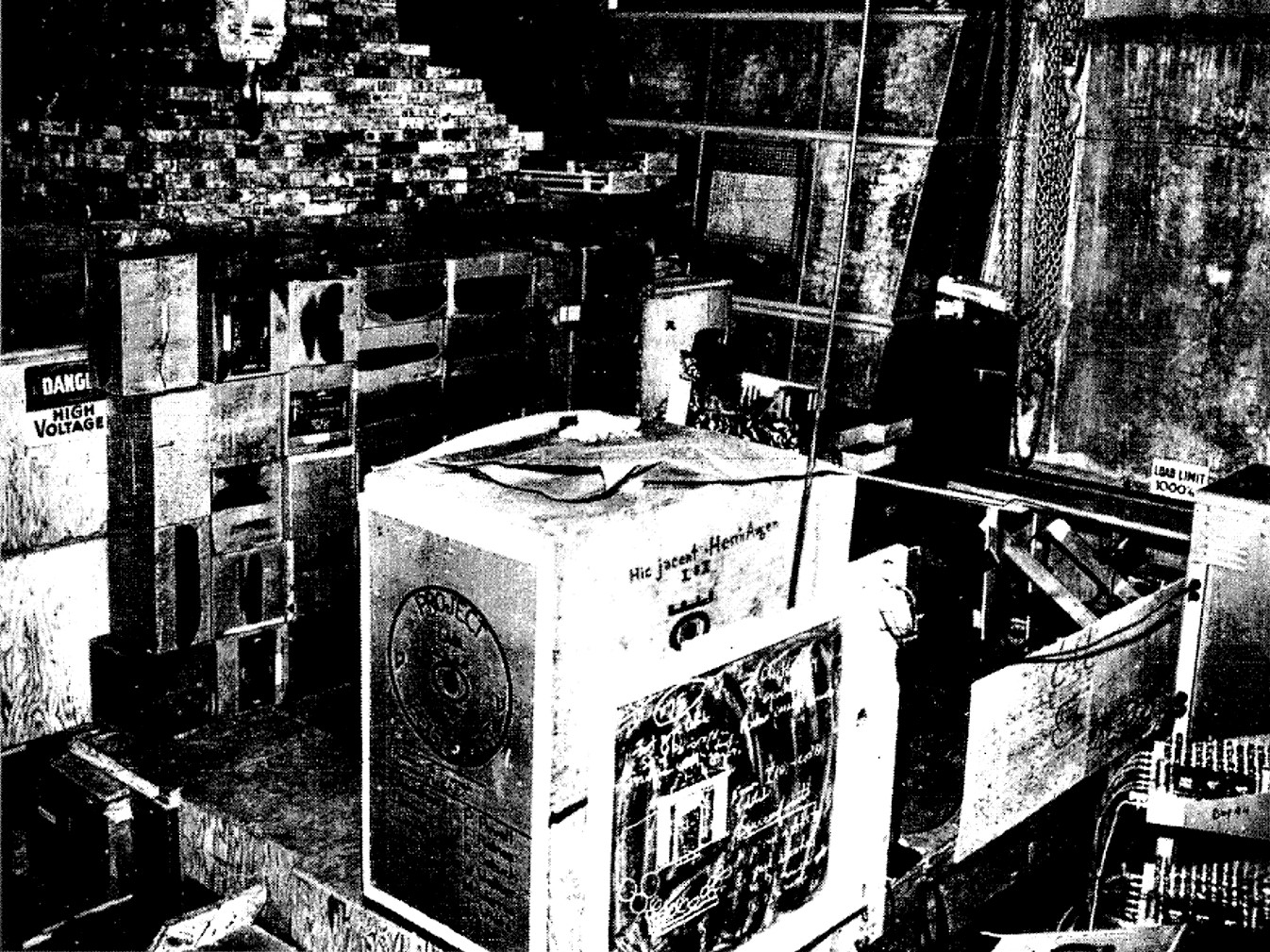 |
1956First result: Evidence for the neutrino by F. Reines and C. Cowan
|
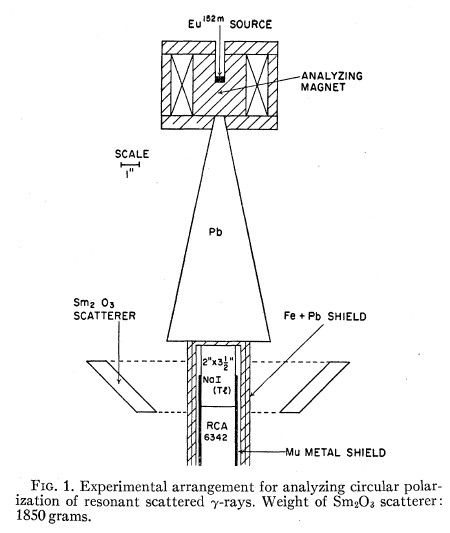
|
1958First result: The Goldhaber experiment shows that neutrinos are left-handed
|

|
1962First result: Observation of the muon-neutrinos νμ, a second family of neutrinos.
|
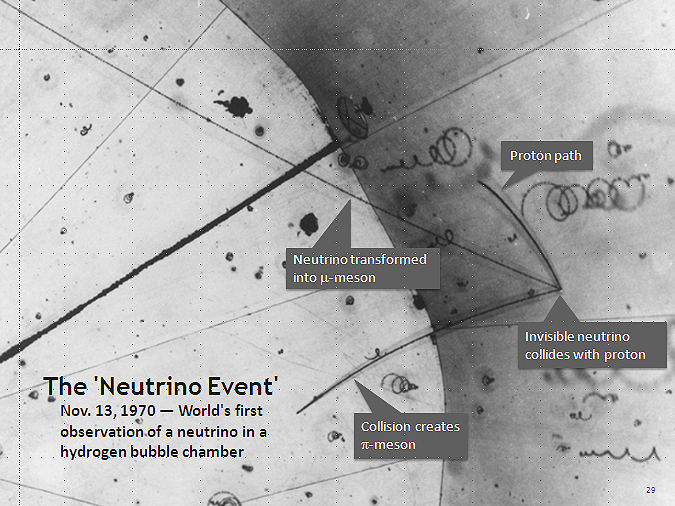 |
1965-1970First neutrino interactions in bubble chambers [Pat65,Arg70]The first neutrino interactions in (heavy liquid) bubble chambers were observed at CERN in 1964-1965 [Pat65] (no picture presently available). The photograph shows the first neutrino-proton interaction observed on November 13th 1970 in the 12-ft hydrogen bubble chamber of the Argonne National Laboratory [Arg70]. |
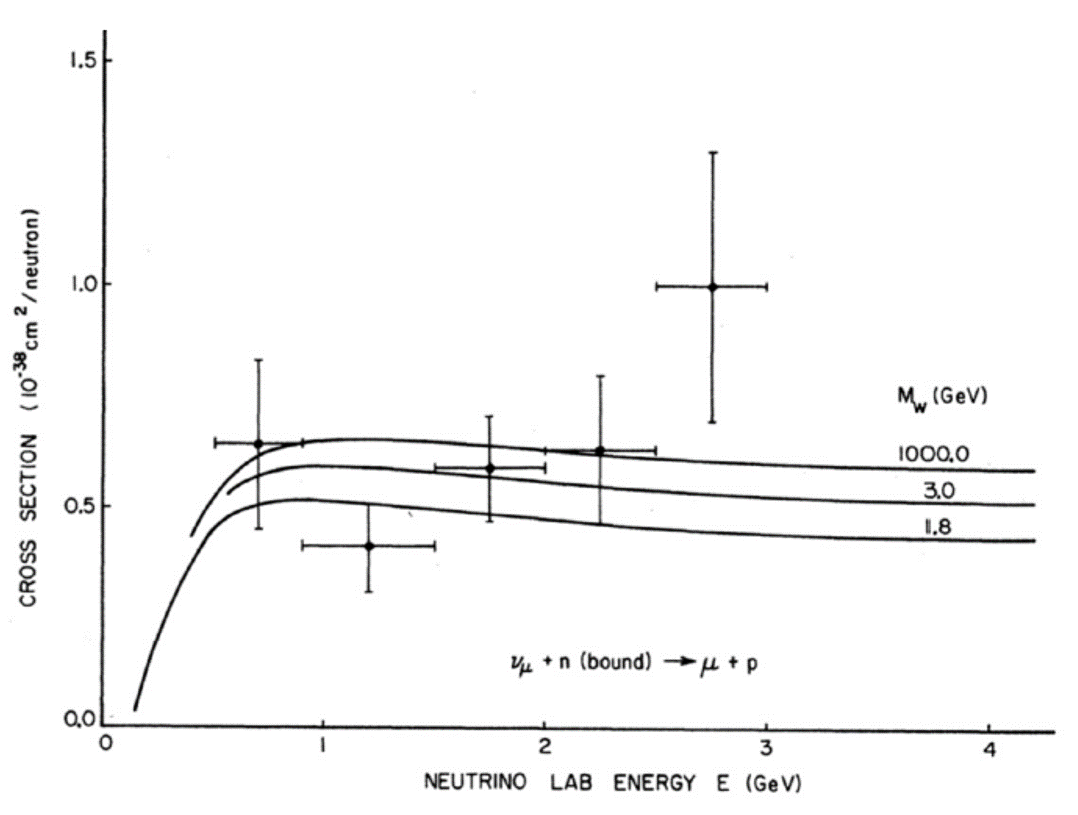
|
1972First result: Measurement of neutrino-nucleon cross-section
|

|
1973First result: Discovery of Neutral Current interactions in the Gargamelle experiment
|
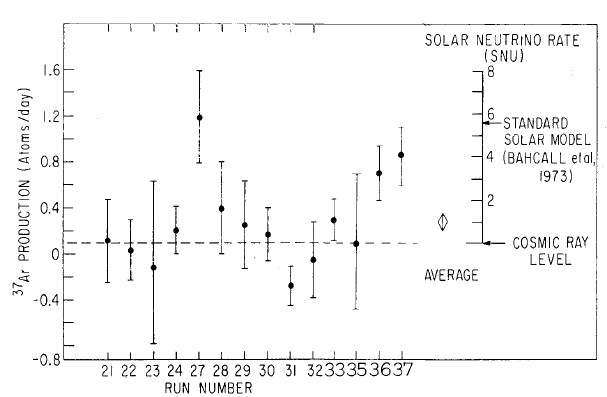 |
1968-1976First result: Homestake solar neutrino experiment and the solar neutrino problem.
|
 |
1987First results: Detection of neutrinos from SN1987A by Kamiokande and IMB
|
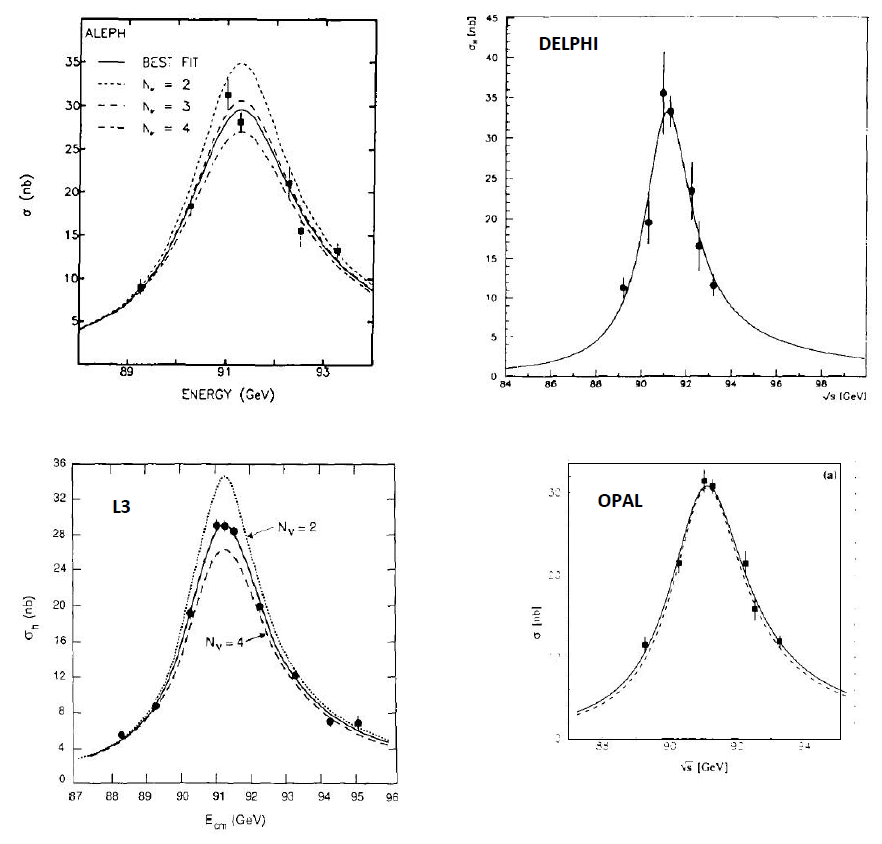 |
1989First result : LEP finds 3 neutrino families
|

to be added: Figure 2004 from Ash04 |
1998First result: First observation of neutrino oscillation from atmospheric neutrinos in the SuperKamiokande experiment.
|
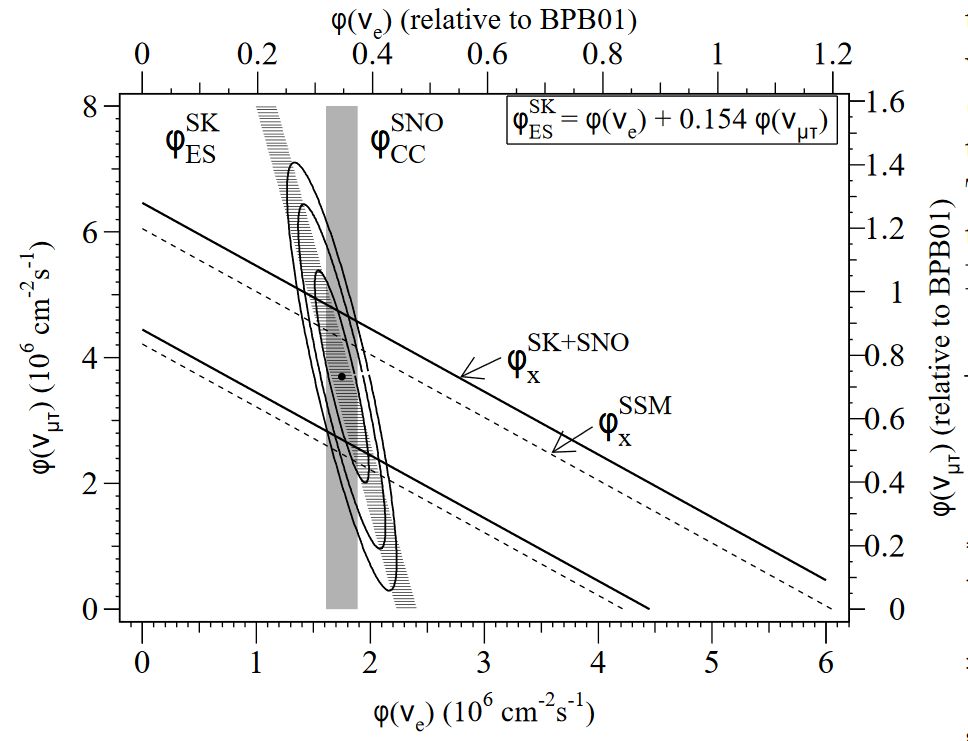 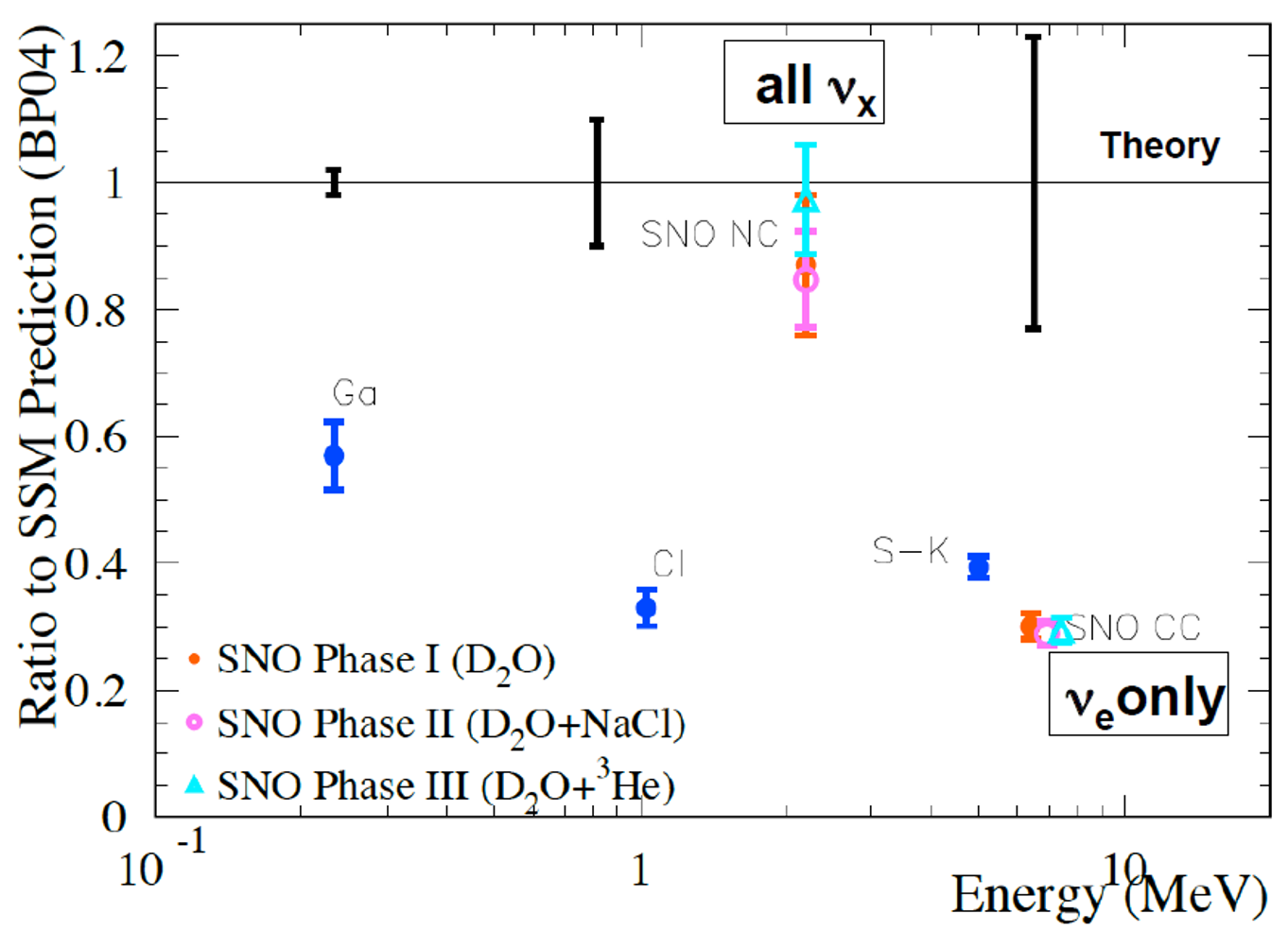 |
2001First result: SNO solves the solar neutrino problem
|
 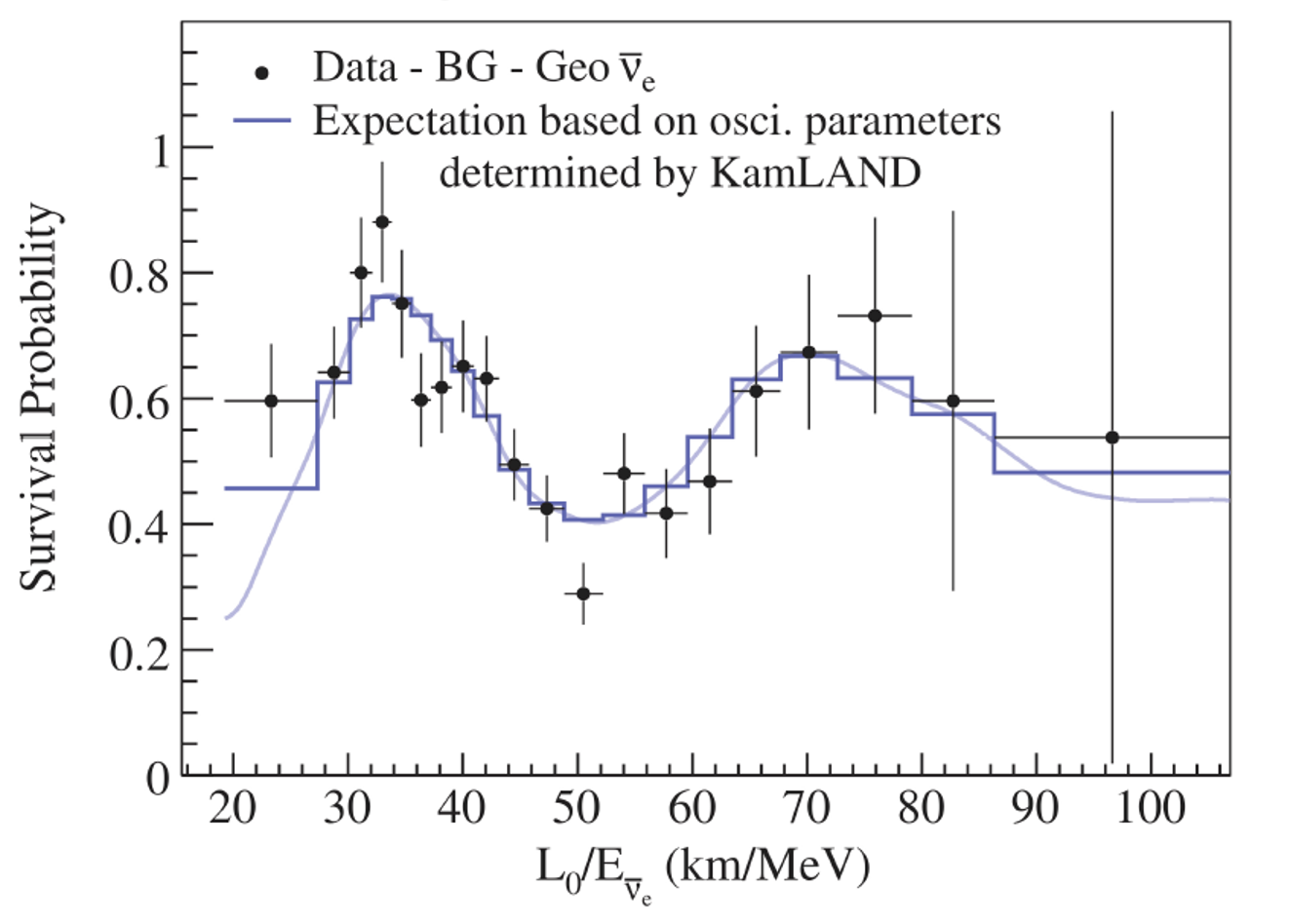 |
2002Summary: KamLAND observes neutrino oscillation
|
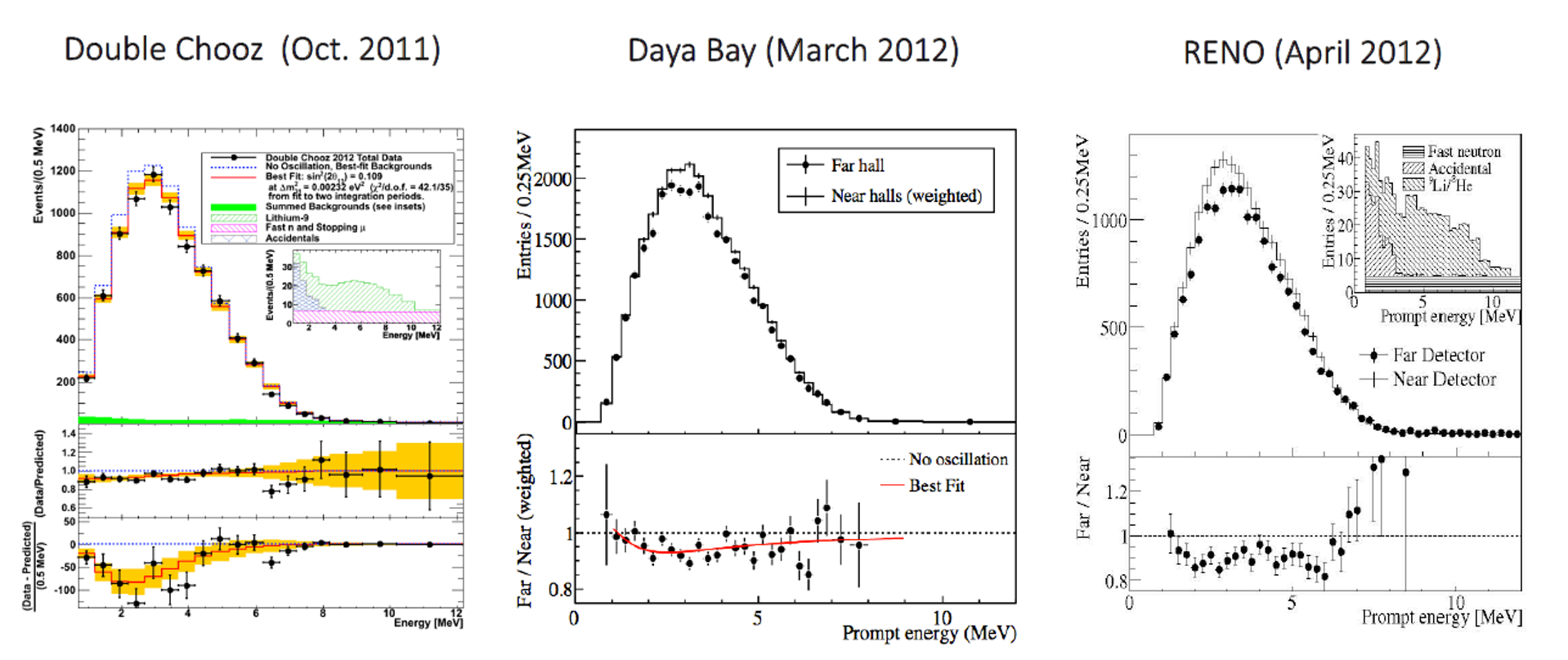 |
2011First result: Evidence for neutrino oscillation in reactor experiments.
|
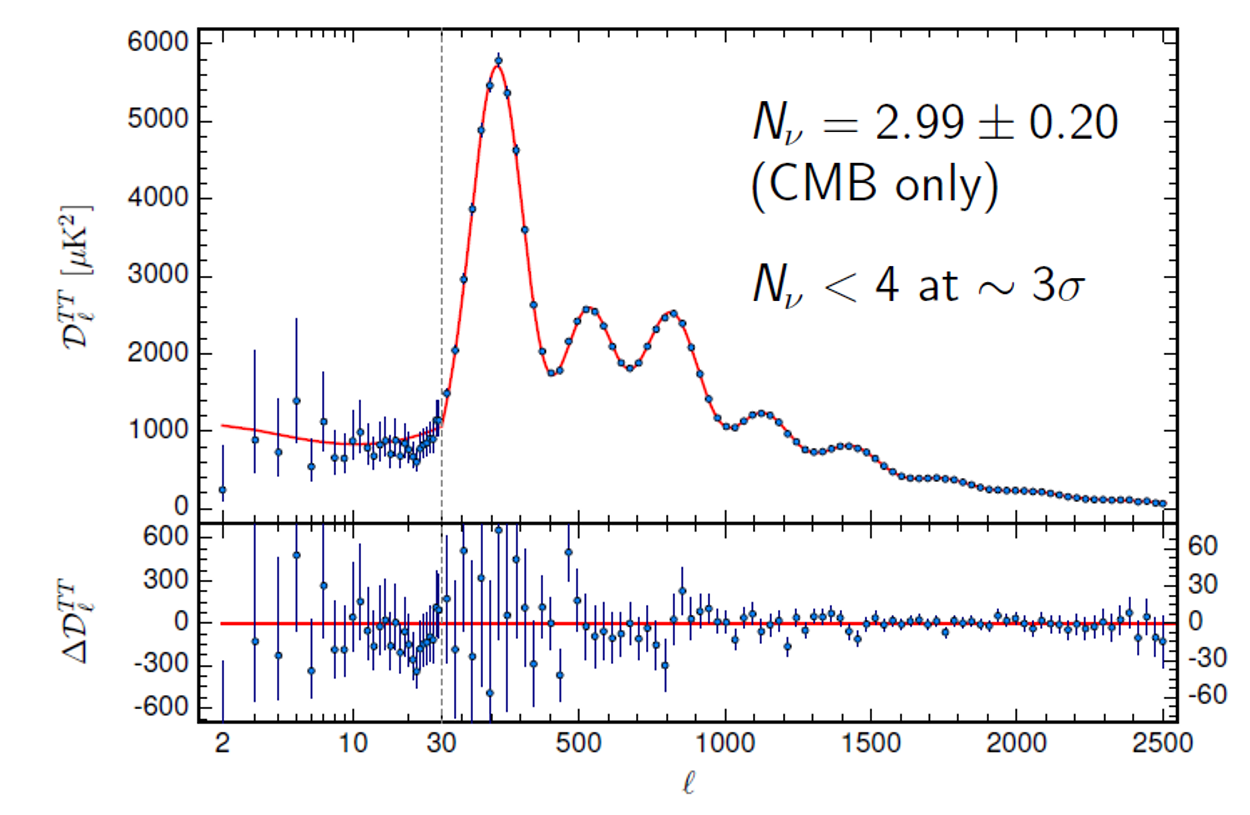 |
2013First result: The cosmological Planck experiment strongly favours 3 neutrino families
|
Summary plots
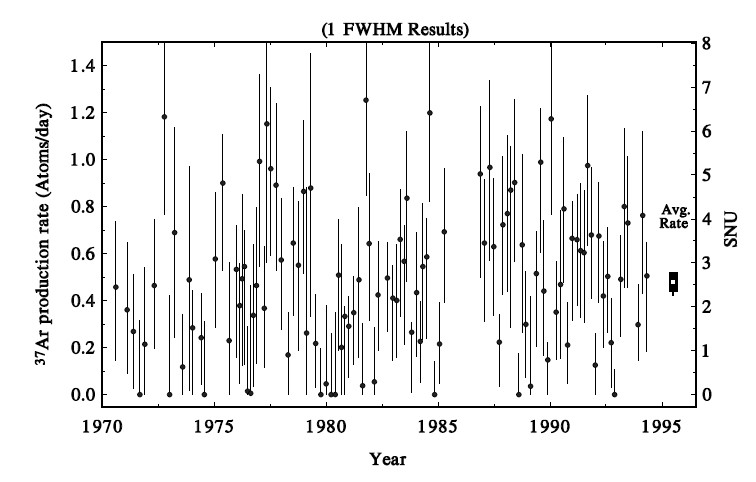 |
1998Summary: Homestake radiochemical solar neutrino experiment [Cle98].The pioneer chlorine solar neutrino experiment run in the Homestake mine for 30 years (1968-1998). The figure shows the final result: each point gives the daily rate of radioactive 37Ar atoms produced by solar neutrinos and extracted from the 600 tons of the C2Cl4 solution of the detector. In SNU’s (solar neutrino units), the result is 2.56+-0.16+-0.16 about three times lower than the predictions of solar models (about 8 SNUs). |
 |
1992-1998Summary: Detection of pp solar neutrinos with radiochemical gallium experiments (GALLEX and SAGE) [Ans92,Abd94]The chlorine solar neutrino experiment was not sensitive to the neutrinos coming from the primordial pp fusion reaction in the core of the Sun (which is directly linked to the luminosity of the Sun). In the middle of the 80’s, two experiments used gallium targets (lower threshold than the chlorine) to trap solar neutrinos by the transformation of 71Ga atoms into radioactive 71Ge atoms: GALLEX in the Gran Sasso underground laboratory and SAGE in the Baksan laboratory. The first GALLEX results, in 1992, (and later SAGE) confirmed the solar neutrino problem, with a deficit smaller than for the chlorine experiment. The figure summarizes the experimental situation in 1998. The two experiments observe about 60% of the predictions of the solar models. The rate is measured in SNU’s (Solar Neutrino Unit) [one SNU corresponds to 10−36 capture per target atom per second]. |
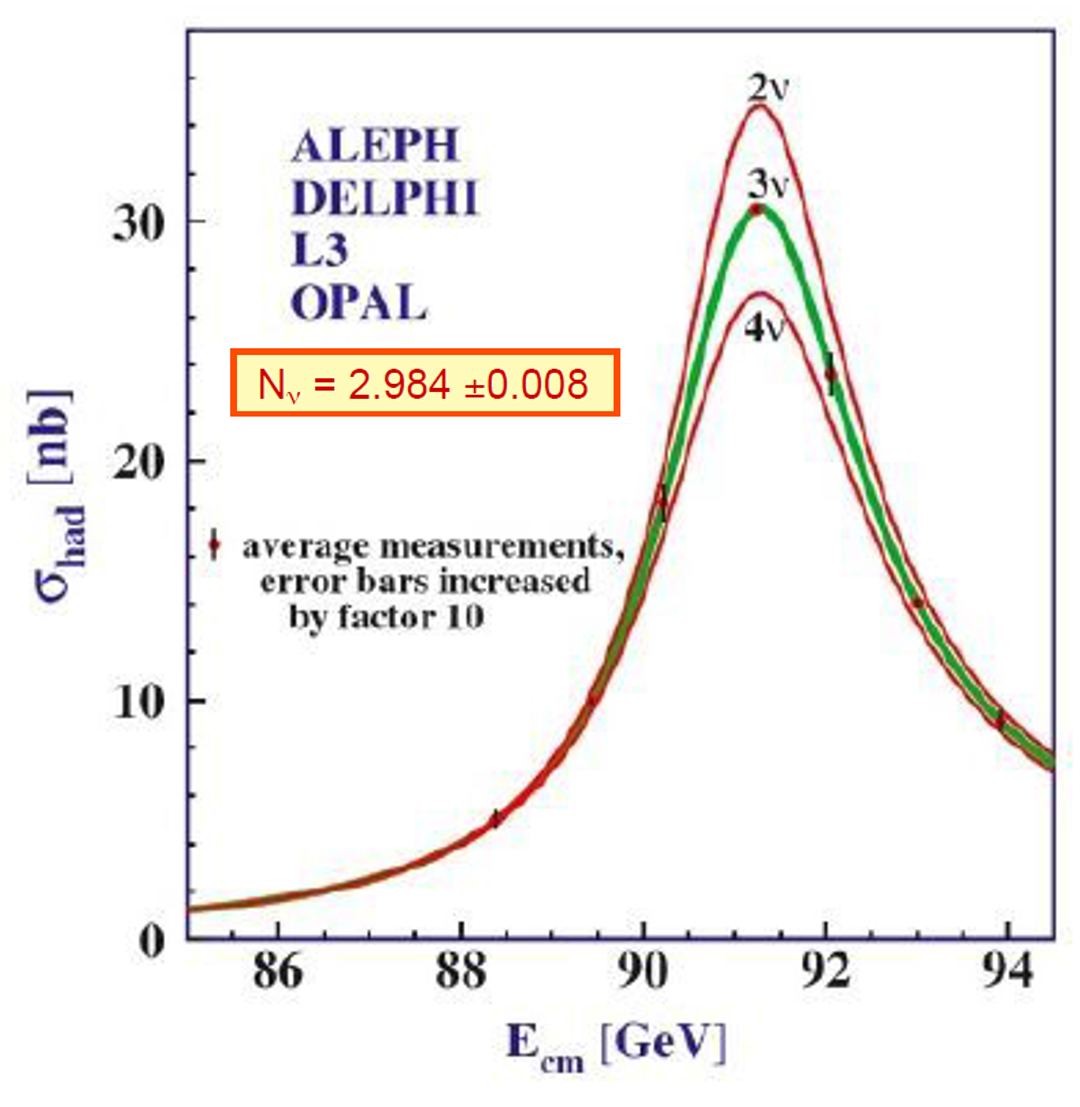 |
2000Summary: LEP finds 3 families of light neutrinos
|
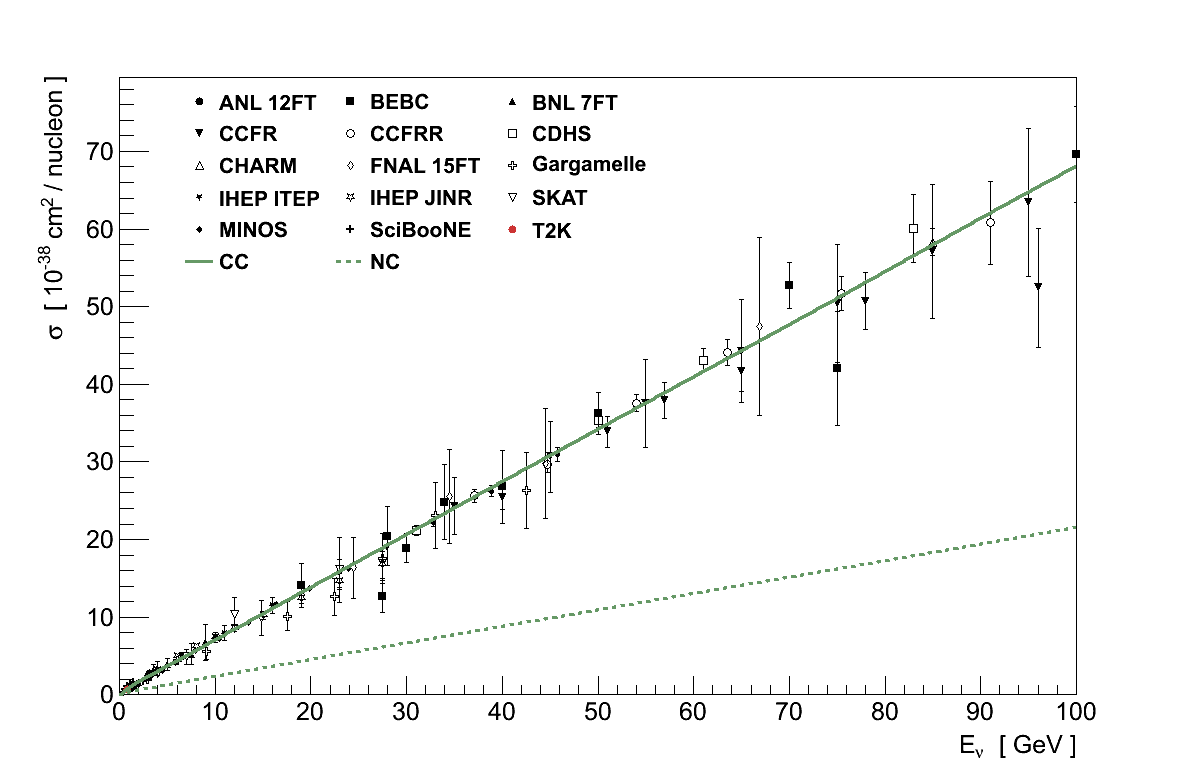 |
2013Summary: neutrino-nucleon total cross-section measurements
|
References
| Author(s) | Title | Reference | Key-words | |
|---|---|---|---|---|
| Aar89 | P. Aarnio et al., DELPHI Collaboration | Measurement of the mass and the width of the Z particle from multi-hadronic final states produced in e+e- annihilations | Phys. Lett. 231 (1989) 539 | historical numbernu milestonebib overviewbib propbib plotbib |
| Abd94 | J.N. Abdurashitov et al. | Results from SAGE (The Russian-American Gallium solar neutrino experiment) | Phys. Lett. B328 (1994) 234 | solar solarbib plotbib |
| Abe11a | K. Abe et al., T2K collaboration | Indication of electron neutrino appearance from an accelerator-produced off-axis muon-neutrino beam | Phys. Rev. Lett. 107 (2011) 041801; arXiv:1106.2822 | historical accelerator oscillation properties milestonebib overviewbib reactorbib oscbib plotbib |
| Abe11b | Y. Abe et al., Double Chooz collaboration | Indication for the disappearance of reactor electron antineutrinos in the Double Chooz experiment | Phys. Rev. Lett. 108 (2012) 131801; arXiv:1112.6353 | historical reactor oscillation properties milestonebib overviewbib reactorbib oscbib plotbib detectorbib |
| Ade13 | P.A.R. Ade et al. | Planck 2013 Results. XVI. Cosmological Parameters | Astronomy and Astrophysics 571 (2014) A16; arXiv:1303.5076 | historical cosmological milestonebib overviewbib cosmobib plotbib |
| Ahm01 | Q.R. Ahmad et al., SNO collaboration | Measurement of the rate ne + d → p + p + e- interactions produced by 8B solar neutrinos at the Sudbury Neutrino Observatory | Phys. Rev. Lett. 87 (2001) 071301; arXiv:nucl-ex/0106015 | historical solar oscillation msw milestonebib overviewbib solarbib oscbib plotbib |
| Ahm02 | Q.R. Ahmad et al., SNO collaboration | Direct evidence for neutrino flavor transformation from neutral-current interactions in the Sudbury Neutrino Observatory | Phys. Rev. Lett. 89 (2002) 011301; arXiv:nucl-ex/0204008 | historical solar oscillation msw milestonebib overviewbib solarbib oscbib plotbib |
| Ahn12 | J.K. Ahn et al., RENO Collaboration | Observation of reactor electron antineutrino disappearance in the RENO experiment | Phys. Rev. Lett. 108 (2012) 191802; arXiv:1204.0626 | historical reactor oscillation properties milestonebib overviewbib oscbib plotbib detectorbib |
| Akr89 | M.Z. Akrawy et al., OPAL Collaboration | Measurement of the Z mass and width the OPAL detector at LEP | Phys. Lett. 231 (1989) 530 | historical numbernu milestonebib overviewbib propbib plotbib |
| An12 | F.P. An et al., Daya Bay collaboration | Observation of electron-antineutrino disappearance at Daya Bay | Phys. Rev. Lett. 108 (2012) 171803; arXiv:1203.1669 | historical reactor oscillation properties milestonebib overviewbib reactorbib oscbib plotbib detectorbib |
| Ans92 | P. Anselmann et al., Gallex collaboration | Solar neutrinos observed by GALLEX at Gran Sasso | Phys. Lett. B285 (1992) 376 | historical solar milestonebib overviewbib solarbib plotbib |
| Ara05b | T. Araki et al., KamLAND collaboration | Measurement of neutrino oscillation with KamLAND: evidence of spectral distortion | Phys. Rev. Lett. 94 (2005) 081801 | reactor oscillation solar overviewbib oscbib plotbib |
| Arg70 | Argonne Laboratory | The neutrino event | ; | plotbib |
| Ash04 | Y. Ashie et al., Super-Kamiokande collaboration | Evidence for an oscillatory signature in atmospheric neutrino oscillations | Phys. Rev. Lett. 93 (2004) 101801 | historical atmospheric milestonebib overviewbib atmosbib oscbib plotbib |
| Bah76 | J.N. Bahcall and R. Davis | Solar Neutrinos: A Scientific Puzzle | Science 191 (1976) 264 | solar review plotbib |
| Bio87 | R.M. Bionta et al., IMB collaboration | Observation of a neutrino burst in coincidence with supernova SN1987A in the Large Magellanic Cloud | Phys. Rev. Lett. 58 (1987) 1494 | historical supernova milestonebib overviewbib supernbib plotbib |
| Blo18 | A. Blondel | The third family of neutrinos | arXiv:1812.11362; Proceedings of the conference "History of the neutrino", 2019 | proceedings conference history propbib plotbib |
| Blo64 | M.M. Block et al. | Neutrino interactions in the CERN heavy liquid bubble chamber | Phys. Lett. 12 (1964) 281 | historical accelerator numubib plotbib |
| Cha14 | J. Chadwick | Intensitatsverteilung im magnetischen spektrum der beta-strahlen von radium B+C | Verhandlungen der deutschen Physikalischen Gesellschaft 16 (1914) 383 | historical betadecay milestonebib overviewbib prehistbib energybib plotbib |
| Cle98 | B.T. Cleveland et al. | Measurement of the solar electron neutrino flux with the Homestake chlorine detector | Astrophysical Journal 496 (1998) 505 | solar solarbib plotbib |
| Cow56 | C.L. Cowan, F. Reines, F.B. Harrison, H.W. Cruse and A.D. McGuire | Detection of the free neutrino: a confirmation | Science 124 (1956) 103, July 20, 1956 - Reprint in “Neutrino Physics”, ed. by K. Winter, Cambridge University Press, 1991 | historical detection milestonebib overviewbib discovbib reactorbib plotbib detectorbib |
| Dan62 | G. Danby, J.M. Gaillard, K. Goulianos, L.M. Lederman, N. Mistry, M. Schwartz and J. Steinberger | Observation of high energy neutrino reactions and the existence of two kinds of neutrinos | Phys. Rev. Lett. 9 (1962) 36 - Reprint in “Neutrino Physics”, ed. by K. Winter, Cambridge University Press, 1991 | historical numbernu milestonebib overviewbib numubib accelbib plotbib detectorbib |
| Dav68 | R. Davis, D.S. Harmer, K.C. Hoffman | Search for neutrinos from the Sun | Phys. Rev. Lett. 20 (1968) 1205 | historical solar milestonebib overviewbib nuantinubib plotbib |
| Dec89 | D. Decamp et al., ALEPH Collaboration | Determination of the number of light neutrino species | Phys. Lett. 231 (1989) 519 | historical numbernu milestonebib overviewbib propbib plotbib |
| Egu03 | K. Eguchi et al. | First results from KamLAND: Evidence for reactor antineutrino disappearance | Phys. Rev. Lett. 90 (2003) 021802 | reactor oscillation solar milestonebib overviewbib oscbib plotbib detectorbib |
| Ell27 | C.D. Ellis and W.A. Wooster | The Average Energy of Disintegration of Radium E | Proc. Roy. Soc. A 117 (1927) 109 | historical betadecay milestonebib overviewbib prehistbib oscbib energybib plotbib |
| Fuk98b | Y. Fukuda et al., Super-Kamiokande collaboration | Evidence for oscillation of atmospheric neutrinos | Phys. Rev. Lett. 81 (1998) 1562 | historical atmospheric milestonebib overviewbib atmosbib oscbib plotbib |
| Gol58 | M. Goldhaber, L. Grodzins, A. Sunyar | Helicity of neutrinos | Phys. Rev. 109 (1958) 1015 | historical properties milestonebib overviewbib discovbib propbib theorybib plotbib detectorbib |
| Has73a | F.J. Hasert et al. | Search for elastic muon-neutrino electron scattering | Phys. Lett. B46 (1973) 121 – Received Jul. 2, 1973 | historical accelerator neutralc milestonebib overviewbib accelbib plotbib detectorbib |
| Has73b | F.J. Hasert et al. | Observation of neutrino-like interactions without muon or electron in the Gargamelle neutrino experiment | Phys. Lett. B46 (1973) 138 – Received July 23, 1973 | historical accelerator neutralc milestonebib overviewbib accelbib plotbib detectorbib |
| Hir87 | K.S. Hirata et al., Kamiokande collaboration | Observation of a neutrino burst from the supernova SN1987A | Phys. Rev. Lett. 58 (1987) 1490 | historical supernova milestonebib overviewbib supernbib plotbib |
| Kaj98 | Takaaki Kajita | Atmospheric neutrino results from Super-Kamiokande and Kamiokande - Evidence for muon-neutrino oscillations | Nucl. Phys. B (Proc. Suppl.) 77 (1999) 123 | historical atmospheric milestonebib overviewbib atmosbib oscbib plotbib |
| Los97 | Los Alamos | Celebrating the neutrino | Los Alamos Science 25 | book history discovbib plotbib |
| Pat65 | Michel Paty | Etudes d’interactions de neutrinos de grande énergie dans une chambre à bulles à liquide lourd | CERN 65-12, 1965 | historical accelerator plotbib |
| Per72 | D. H. Perkins | Neutrino interactions | Proc. of the 16th Int. Conf. On High-Energy Physics, Batavia (1972), vol. 4, p.189 | proceedings plotbib |
| Pon59b | B. Pontecorvo | Electron and muon neutrinos | Soviet Physics JETP 10 (1960) 1236 ; J. Exp. Theoret. Phys. 37 (1959) 1751 - Submitted July 9, 1959 - Reprint in “Neutrino Physics”, ed. by K. Winter, Cambridge University Press, 1991 | historical numbernu numubib overviewbib plotbib |
| Rei53 | F. Reines and C.L. Cowan | Detection of the free neutrino | Phys. Rev. 92 (1953) 830 | historical detection milestonebib overviewbib discovbib reactorbib plotbib |
| Rei56 | Frederick Reines and Clyde Cowan jr. | The neutrino | Nature 178 (1956) 446 | historical detection milestonebib overviewbib discovbib reactorbib plotbib |
| Sch60 | M. Schwartz | Feasibility of using high energy neutrinos to study the weak interactions | Phys. Rev. Lett. 4 (1960) 306 - Submitted Feb. 23, 1960 - Reprint in “Neutrino Physics”, ed. by K. Winter, Cambridge University Press, 1991 | historical numbernu numubib overviewbib plotbib |
| Scu13 | Daniel Ivan Scully | Neutrino induced coherent pion production | Ph. D. thesis, Univ. of Warwick (2013) | plotbib |

